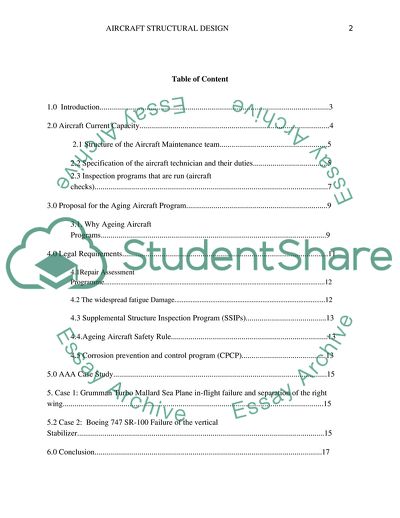Cite this document
(Aircraft Structural Design: Ageing Aircraft Program Coursework Example | Topics and Well Written Essays - 3750 words, n.d.)
Aircraft Structural Design: Ageing Aircraft Program Coursework Example | Topics and Well Written Essays - 3750 words. https://studentshare.org/engineering-and-construction/1797273-aircraft-structrual-design-proposal-for-an-ageing-aircraft-programme
Aircraft Structural Design: Ageing Aircraft Program Coursework Example | Topics and Well Written Essays - 3750 words. https://studentshare.org/engineering-and-construction/1797273-aircraft-structrual-design-proposal-for-an-ageing-aircraft-programme
(Aircraft Structural Design: Ageing Aircraft Program Coursework Example | Topics and Well Written Essays - 3750 Words)
Aircraft Structural Design: Ageing Aircraft Program Coursework Example | Topics and Well Written Essays - 3750 Words. https://studentshare.org/engineering-and-construction/1797273-aircraft-structrual-design-proposal-for-an-ageing-aircraft-programme.
Aircraft Structural Design: Ageing Aircraft Program Coursework Example | Topics and Well Written Essays - 3750 Words. https://studentshare.org/engineering-and-construction/1797273-aircraft-structrual-design-proposal-for-an-ageing-aircraft-programme.
“Aircraft Structural Design: Ageing Aircraft Program Coursework Example | Topics and Well Written Essays - 3750 Words”. https://studentshare.org/engineering-and-construction/1797273-aircraft-structrual-design-proposal-for-an-ageing-aircraft-programme.


